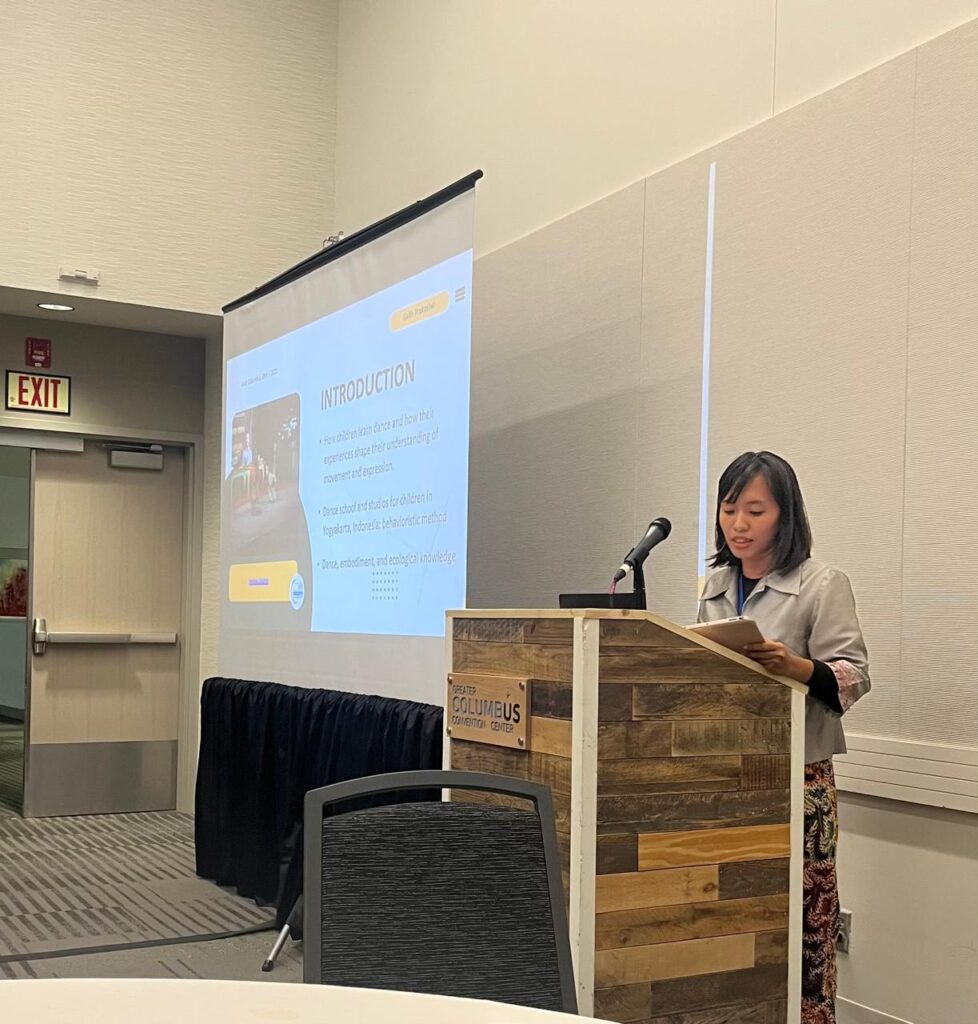Behind the Stage: Tari Saraswati
Documentary Film Screening at IKASTISI 2025 Meet and Greet
Documentary movie Behind the Stage: Tari Saraswati was screened at the IKASTISI 2025 Meet and Greet event as part of an effort to document the important journey of performing arts at ISI Yogyakarta. This movie tells the process of creation and development Saraswati Dance, This is a dance from its inception to an integral part of the procession of the ISI Yogyakarta Senate Session. This dance was created by Dra. Sri Hastuti, M.Hum and Dr. Darmawan Dadijono, with accompanist Drs. Sunyata, M.Hum. As a work that now plays an important role in symbolizing institutional values, Saraswati Dance has become an icon that represents the identity of ISI Yogyakarta.
The movie is produced by Dr. Rina Martiara, M.Hum who also serves as Head of the Dance Department. In his introduction, he emphasized that this documentary does not present dramatization like a fictional film, but focuses on the daily life that happens backstage: the rehearsal process, preparation before the performance, to the dynamics that are often underestimated but essential for artists. Precisely from that daily life, this film invites the audience to realize that Saraswati Dance is not just a performance, but a space for actualization of art values, knowledge, and spirituality.
The realization that Saraswati Dance has become part of the visual and cultural identity of ISI Yogyakarta encourages the importance of preservation in the form of documentation. This film is the first step in a series of further developments: plans to make a fiction film that explores legends and sites related to Dewi Saraswati, as well as dance films as a form of exploration of artistic expression. This idea has even expanded into the realm of visual arts, with the plan to make a statue of Dewi Saraswati initiated by the Rector of ISI Yogyakarta, Timbul Raharjo, inspired by the visualization of the Saraswati dancers in the YICAF-3 exhibition at the Faculty of Fine Arts and Design.
Behind the Stage: Tari Saraswati is not just a documentation of the process, but also a collaborative trace to maintain institutional memory, strengthen artistic reflection, and mark a new direction of performing arts identity at ISI Yogyakarta.

ISI Yogyakarta Dance Department Lecturer, Galih Prakasiwi, Presentation at AAS 2025 International Conference in Ohio, USA
Galih Prakasiwi, a lecturer at the Dance Department of Institut Seni Indonesia (ISI) Yogyakarta, participated as a presenter in the prestigious conference. Association for Asian Studies (AAS) Annual Conference 2025 which took place in Ohio, United States, on Friday, March 14, 2025.
On this occasion, Galih presented a paper entitled “Reading Nature through Dance Movement: Dance for Ecological Awareness of Children in Rural Areas”. This presentation was part of the panel “Intergenerational Discursive Practices and Aesthetics as Praxis in Indonesian Women's Livelihood and Knowledge”, The panel was chaired by Cahya H. Yunizar (University of Minnesota), and discussed by Sumarsam, senior ethnomusicologist and professor emeritus from Wesleyan University. The panel also featured Rachmi D. Larasati (University of Minnesota professor of transnational politics and gender) and Cahya H. Yunizar (visiting scholar at the University of Minnesota) as other presenters.
Galih's paper is based on research into how dance practice and dance learning can be a means of developing ecological knowledge as a way of understanding the world. She argues that when children learn and create dance, they engage the body, sensitivity, cooperation, and awareness of shared well-being. This research shows that understanding the body is the first step towards awareness of the relationship between personal well-being and ecological balance in the surrounding environment.
The research focused on children at Oemah Larasati, a rural community on the outskirts of Yogyakarta. Here, classes are designed to explore movement and observe the surrounding environment, with inspiration from plants in the yard, rice fields, and animals. Children observe objects, create stories in small groups, and then develop individual movements that are shared with friends. Within one year, it was found that the children were able to create narratives and movements about their environment, which also referenced traditional Javanese dance forms. They also chose movements from their imagination and designed their own costumes.
This method is proposed as part of a decolonizing learning practice, rooted in an aesthetic that grows out of the environment and experiences of rural children. Galih's panel as a whole examined cross-generational discursive practices in Asian studies, focusing on aesthetics as a form of praxis in the context of Indonesian women's lives and knowledge. The panel explored how art forms, stories, and bodily experiences are instrumental in spatially and temporally layered processes of knowing. Through an interdisciplinary approach, the speakers characterized continuity, change, and diversity of expression as forms of resilience in the face of various civic contexts.
Galih Prakasiwi's involvement in AAS 2025 shows ISI Yogyakarta's active contribution in international academic forums and strengthens the position of dance as a reflective medium relevant to contemporary issues such as education, environment, and cultural sustainability.